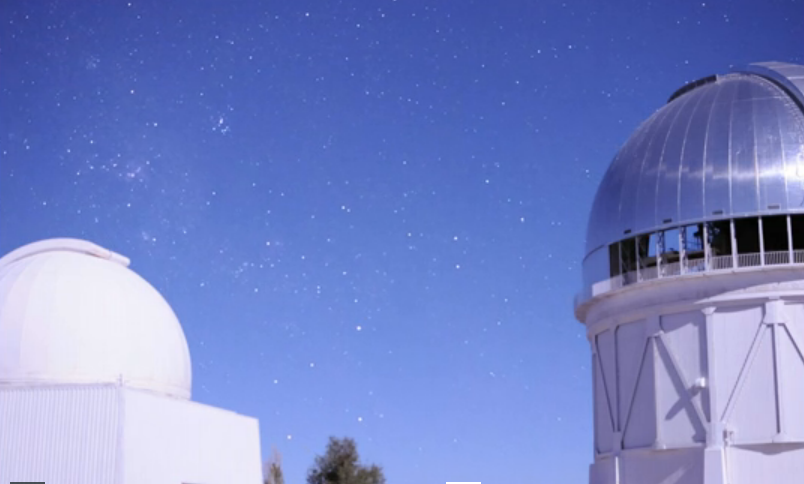Science News
Dark Energy and Dark Matter
January 10, 2013

Ryan Wyatt, Director of Morrison Planetarium and Science Visualization, reporting from the third day of the American Astronomical Society (AAS) meeting in Long Beach, California…
How can you have a 21st-century astronomy conference without talking about dark matter and dark energy? As I discussed yesterday, exoplanets may rule the day at meetings and press conferences, but cosmology topics rarely get short shrift.
Computational cosmologist Tom Abel, who works at Stanford’s Kavli Institute for Particle Astrophysics and Cosmology (and who contributed a scene to the Academy’s Life: A Cosmic Story planetarium show), described how his computer models of the early Universe reconstruct the evolution of stars and galaxies during its first billion years. Dark matter interacts with ordinary matter (like us) only through the force of gravity, and it drives the formation of much of the structure (such as those stars and galaxies) in the early Universe. Indeed, the very first structures that appear in Abel’s simulations are dark matter lumps approximately the size of Earth. Ordinary matter follows the gravitational tug from dark matter, abetted by the low, low temperatures (just a few tens of Kelvins above absolute zero) during the “Cosmic Dark Ages,” which ended in the “Cosmic Dawn” I described in my first post from this week’s AAS meeting.
Calculating how dark matter behaves has produced results that closely match the appearance of the modern Universe. But we haven’t managed to detect dark matter in any way other than its gravitational effect on normal matter. Douglas Finkbeiner, from the Harvard Center for Astrophysics, described three ways to find dark matter particles: you can try to make them (the Large Hadron Collider is attempting this), try to detect them as they fly through Earth (the Large Underground Xenon Experiment is attempting that), or most craftily, try to observe their annihilation… Finkbeiner described the final effort in greatest detail, since less than a year ago, a scientific publication made a “tentative” announcement that just such evidence had shown up in data from NASA’s Fermi Space Telescope. The sum total of the observation consists of fourteen photons over four years, but those fourteen photons have caused quite a stir— more than 100 papers reference that original publication! (That’s more than seven papers per photon.) But since that announcement, Fermi hasn’t detected the fifteenth photon, so it could be a statistical fluke. We need more data.
And it gets weirder. We’ve known about dark matter for decades, but dark energy only entered the scene in the last fifteen years or so. Dark energy refers to one way of thinking about why the expansion of the Universe continues to accelerate, basically counteracting the effect of gravity, which would cause the rate of expansion to slow…
Josh Frieman, from the Fermilab Center for Astrophysics, described an ambitious project known as the Dark Energy Survey. The project uses four complementary techniques to look for the effects of dark energy on the evolution of the Universe: counts of galaxy clusters at varying distances (which should reveal the competition between gravity and dark energy over time), weak gravitational lensing (looking at how gravity distorts light from 200 million different galaxies), large-scale mapping of galaxies (revealing how 300 million galaxies are distributed in space and influenced by accelerated expansion), and supernovae measurements (finding perhaps 4,000 exploding stars and using their light to fine-tune distance measurements to various galaxies).
All these combined efforts will require the technology of a recently-completed 570-megapixel imager (the equivalent of dozens of high-resolution digital cameras or about 72 iPhones) mounted on a four-meter telescope in Chile. They will begin observing in September 2013, and they expect their first dark energy results in late 2015.
Frieman pointed out that scientists have actually never undertaken any direct tests of Einstein’s theory of gravity on cosmological scales—all the tests relate to the relatively (so to speak) nearby universe. So all these efforts might lead to an understanding of this mysterious entity we refer to as “dark energy,” or perhaps we will have to modify our theory of gravity… Either way, it’s a big deal!
Stay tuned for one more astronomy wrap up tomorrow…